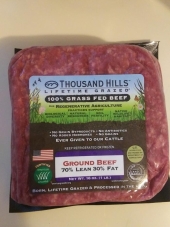
 2
2




 2
2




 2
2




 2
2




Freakin' hippies and Squares, since 1986
 2
2




 1
1




Grow things and have fun
www.facebook.com/wayfarerfarm
 2
2




Pecan Media: food forestry and forest garden ebooks
Now available: The Native Persimmon (centennial edition)
 2
2




Chris Badgett
Cocreator of Organic Life Guru. Have you seen what's happening over there?
 2
2





 3
3




Travis Krause wrote:
If you can't gross at least $1000 in a day then it isn't worth your time.
Order copies of my book, Dairy Farming: The Beautiful Way at
www.createspace.com
Help spread the word! Thanks!
struggle - hustle - soul - desire
 2
2




 6
6




No trees were killed in the creation of this message, however, many electrons were terribly inconvenienced







 1
1




Peter Ellis wrote:Suggestions to look at farmers markets and determine what is not being offered deserve consideration, but the absence may be a sign not of a product missing from the market but of a market not demanding a product. Definitely worth looking, but look at both possibilities.
 1
1




It's never too late to start! I retired to homestead on the slopes of Mauna Loa, an active volcano. I relate snippets of my endeavor on my blog : www.kaufarmer.blogspot.com




Peter Ellis wrote: ...I am hoping that there is someone reading this who can point us toward at least one source for one of these areas (say, cider apples in Michigan) and save all of us some time chasing them down ourselves. But in the meantime, I will be dragging the web looking for the data - and bringing it back to share as I find it.
 1
1




Jeremy E. Elwell
Elwell's Supplies-A farmers' market supply store.
www.elwellsupplies.com




Kevin's offshoot of PEX: http://uhspr.ca/merit-badges/
 1
1




 I know this post doesn't answer your question, but I hope it does illustrate why you are having such a hard time finding the answers you seek.
I know this post doesn't answer your question, but I hope it does illustrate why you are having such a hard time finding the answers you seek.The "d" key doesn't work on my laptop (coffee incident).
Web: http://www.sunfunfarms.com FB sales: https://www.facebook.com/TexasSunfunEdibles FB fun farm stuff: https://www.facebook.com/TexasSunfunFarms

 1
1




The answers you're looking for vary greatly by geographic region and certainly within the micro regions within those geographic regions.

|
I just had the craziest dream. This tiny ad was in it.
The new gardening playing cards kickstarter is now live!
https://www.kickstarter.com/projects/paulwheaton/garden-cards
|







